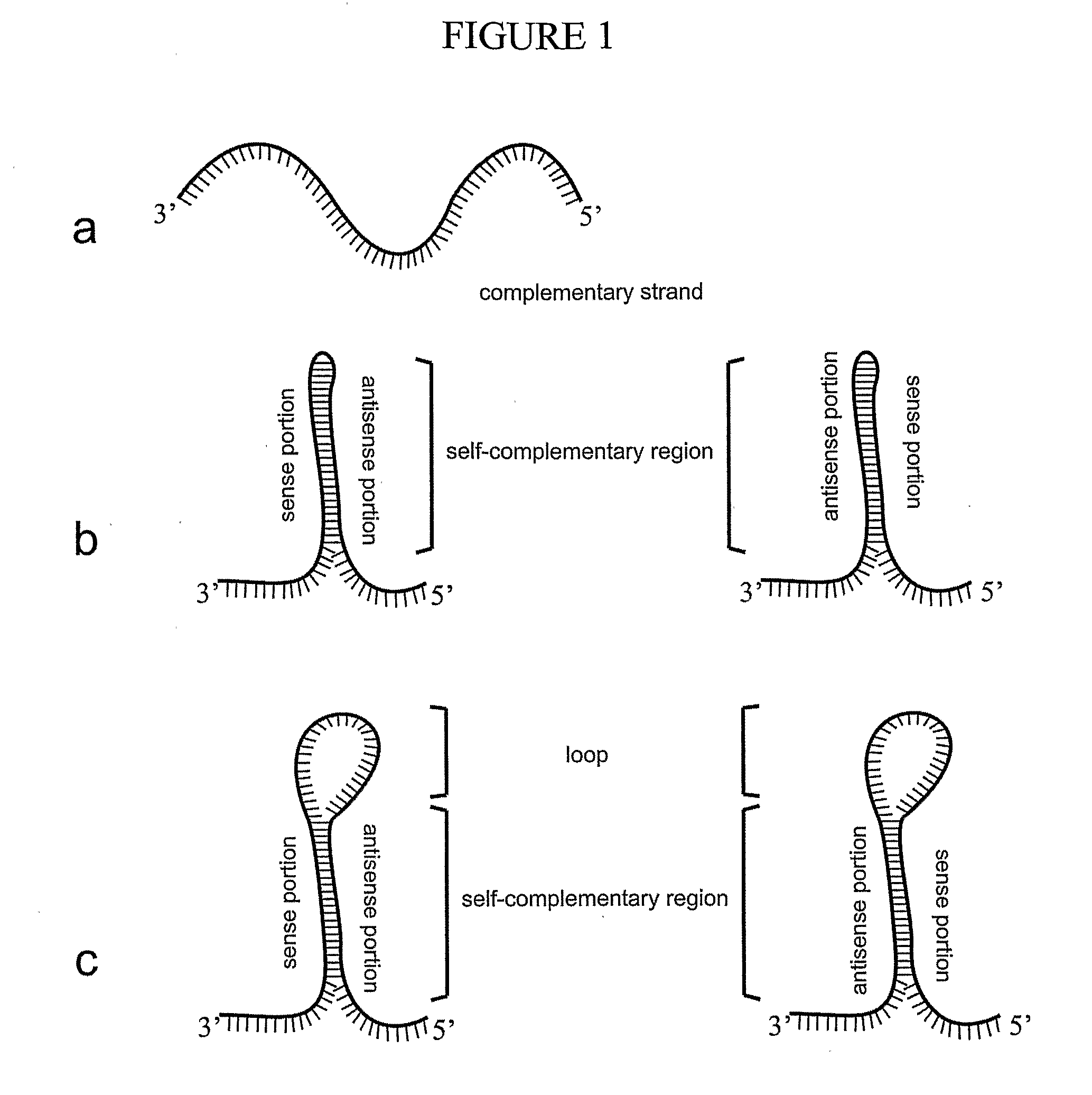Methods For The Modulation of Oleosin Expression In Plants
a technology of oleosin and plant genes, applied in the field of plant genetic engineering methods, can solve the problems of limited moduleation, inability to allow, and limited oil body protein modulation, and achieve the suppression of oleosin gene expression, and lipid and protein content in seed reserves
- Summary
- Abstract
- Description
- Claims
- Application Information
AI Technical Summary
Benefits of technology
Problems solved by technology
Method used
Image
Examples
example 1
Construction of Oleosin Suppression Cassettes
[0258]Antisense Cassette
[0259]The Atol1 cDNA was amplified using the forward primer NTD (5′-TATTAAGCTTCCATGGCCGATACTGCTAGAGG-3′) (SEQ ID NO:92) containing HindIII and NcoI restriction sites (underlined) and the reverse primer CTR (5′-AGCCATACTAGTAGTGTGTTGACCACCACGAG-3′) (SEQ ID NO:93) containing the SpeI restriction site (underlined) using Atol1 cDNA (SEQ ID NO:94) as a template. The PCR product was purified and inserted in the vector pSBS2090, under control of the phaseolin promoter / terminator (Slightom et al., 1983 Proc. Natl. Acad. Sci. U.S.A. 80:1897-1901.). This vector was previously digested with the restriction enzyme SwaI (FIG. 3b). The PCR product can be inserted in a direct or inverted orientation because the enzyme SwaI generates blunt ends. The plasmids containing Atol1 cDNA in the inverse orientation was screened with the enzyme NcoI. A vector containing Atol1 cDNA in the inverse orientation digested with NcoI releases a DNA ...
example 2
Agrobacterium and Arabidopsis Transformation
[0265]The binary vectors pSBS3000-antisense, pSBS3000-hairpin and pSBS3000-hairpin+intron were individually inserted in Agrobacterium EHA101 (Hood, E. E. et al. 1986. Journal of Bacteriology 168:1291-1301) by electroporation method. The transformed Agrobacterium lines containing the binary vector were selected using spectinomycin resistance (“SpecR” in FIG. 5e). One line of Agrobacterium was selected for each construct.
[0266]Arabidopsis thaliana ecotype C24 was used for transformation. Five seeds were planted on the surface of a soil mixture (two-thirds Redi-earth and one-third perlite with a pH=6.7) in 4 inch pots. The seedlings were allowed to grow to a rosette stage of 6-8 leaves to a diameter of approximately 2.5 cm. These seedlings were transplanted into 4 inch pots containing the above soil mixture, covered with window screen material which has five 1 cm diameter holes cut into the mesh; one in each of the corners, and one in the cen...
example 3
Isolation of Oil Bodies
[0270]The accumulation of Atol1 in seeds recovered from the selected plants was analyzed by SDS-PAGE of the oil body fraction. Oil bodies from these seeds were obtained using the method reported by van Rooijen & Moloney, (1995) Biotechnology (N.Y.) 13, 72-77 with the following modifications. Briefly, 10 to 20 mg of dry mature seeds were ground inside a 1.7 ml microfuge tube with 0.4 ml of oil body extraction buffer (50 mM Tris-HCl pH 7.5 with 0.4M of sucrose and 0.5M of NaCl). The extract was centrifuged for 15 min at 10,000 g at room temperature (RT). After centrifugation the fat pad containing the oil bodies was removed from the aqueous phase and transferred to another microfuge tube. The oil bodies were resuspended in 0.4 ml of high stringency urea buffer (8M Urea in 100 mM Na-Carbonate buffer pH 8.0). The sample was centrifuged for 15 min at 10,000 g at 4° C. and the undernatant removed. The oil bodies were finally suspended in 0.1 ml of water. The presenc...
PUM
| Property | Measurement | Unit |
|---|---|---|
| Fraction | aaaaa | aaaaa |
| Fraction | aaaaa | aaaaa |
| Fraction | aaaaa | aaaaa |
Abstract
Description
Claims
Application Information
 Login to View More
Login to View More - R&D
- Intellectual Property
- Life Sciences
- Materials
- Tech Scout
- Unparalleled Data Quality
- Higher Quality Content
- 60% Fewer Hallucinations
Browse by: Latest US Patents, China's latest patents, Technical Efficacy Thesaurus, Application Domain, Technology Topic, Popular Technical Reports.
© 2025 PatSnap. All rights reserved.Legal|Privacy policy|Modern Slavery Act Transparency Statement|Sitemap|About US| Contact US: help@patsnap.com



